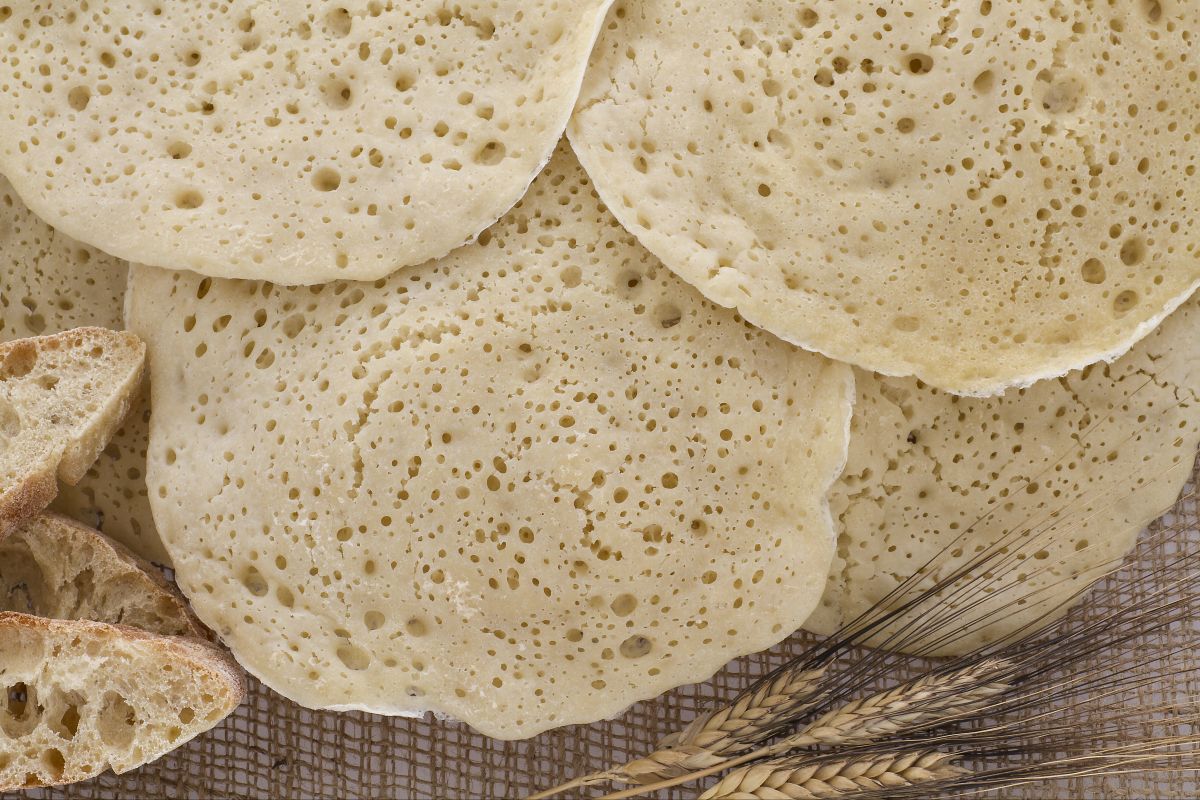Pappa al pomodoro (Tuscan Tomato and Bread Soup)
- Easy
- 60 min

Lahuh bread is totally a must-have in Yemeni homes and Middle Eastern gatherings. It's got this unique moist, pancake-like texture. Not your usual dry flatbread, really. It's really something else. The Lahuh recipe is pretty simple—no oven required, just a pan. The cool trick? Letting the pan cool between batches keeps it tender, with those classic bubbles on top. Gives it that soft, stretchy feel with a bit of chew—perfect with so many dishes. People in Yemen and Jewish kitchens enjoy this Yemeni flatbread with spiced meats, a scoop of hummus, or dipped in tomato sauce.
The best thing about Lahuh bread? Its versatility. You can pair it with savory or sweet flavors. Imagine this: drizzling warm pieces with honey and almonds, which highlights the bread’s sweet and golden sides. It's a simple treat. Feels special, you know? Especially as it soaks up flavors. When you catch that rich, yeast-y aroma—man, you know it's gonna be good. The traditional Yemeni bread experience is all about those amazing scents and textures.
And here's the thing, the Lahuh recipe doesn’t take much time or effort. Really, it’s a breeze. You get results that are always fluffy and crispy at the edges if you manage the pan temperature right. Whether you're enjoying it with a savory dish or as a dessert, Lahuh bread brings Middle Eastern vibes to your table in a casual yet authentically Yemeni way.
With just a few basic Lahuh ingredients and a pan, you create something central to Yemeni cuisine—perfect for sharing. It's a real staple. I mean, it offers an experience rich in taste and tradition, so it's a must-try for anyone looking to dive into the diverse flavors of the Middle East. Super, super good!

To prepare the lahuh, first, soak the white bread, crust removed, in cold water for 5 minutes 1. Once it's very soft, squeeze it well with your hands 2. Dissolve the yeast in warm water (alternatively, you can use 12 g of fresh yeast) 3.

In a large bowl, mix the flour, sugar, and salt and gradually pour the water with the yeast over them 4, stirring with a whisk to combine the ingredients well 5. Add the soaked and well-squeezed bread 6 and

mix to break down the bread and eliminate any lumps 7. Cover the bowl with plastic wrap 8 and let the mixture rise at room temperature for about 2 hours; after this time, the mixture will be puffier and full of bubbles 9.

At this point, you can proceed to cook the lahuh: lightly grease (with vegetable oil or olive oil) a non-stick pan with low edges, about 8 inches in diameter (a crepe pan), spreading the oil with a piece of kitchen paper 10 and pour about 110 g of batter 11, spreading it over the entire surface of the pan, using the back of a spoon 12.

Cook the lahuh over medium heat, without ever turning the bread, until even the surface is set (13-14). Once cooked, place the lahuh on a clean cloth, cover it with another cloth. Before continuing with another portion of batter, it's important to cool the pan in a bowl of ice water or under cold running water, to get a smooth bread on one side and full of bubbles on the other. Continue cooking the remaining batter until finished 15. Serve the lahuh warm!